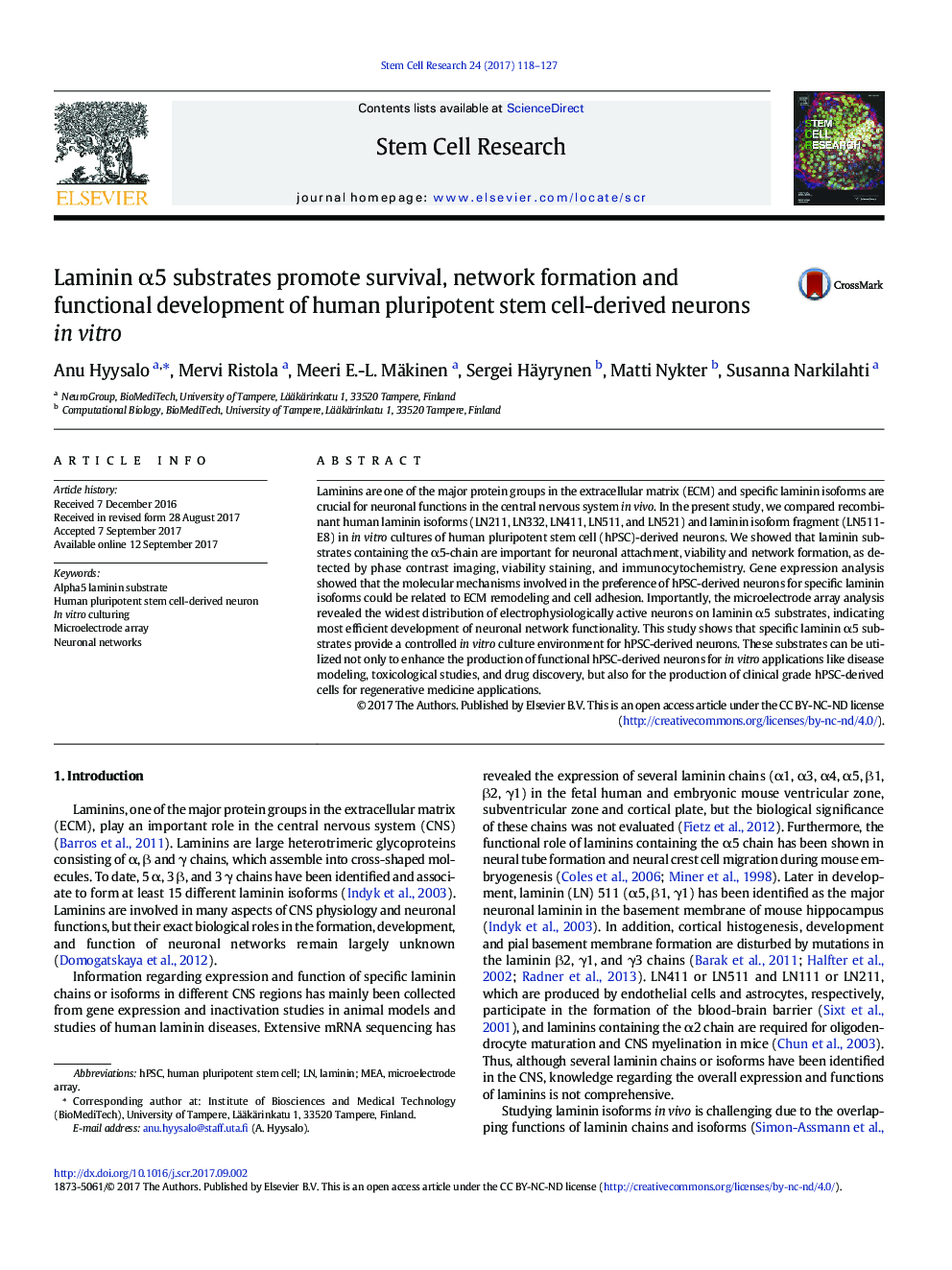| Article ID | Journal | Published Year | Pages | File Type |
|---|---|---|---|---|
| 5522688 | Stem Cell Research | 2017 | 10 Pages |
â¢Comparison of recombinant LN isoforms for culturing of hPSC-derived neurons.â¢ECM remodeling and cell adhesion can influence cellular preference for LN isoforms.â¢LN α5 chain is important for neuronal attachment, viability and network formation.â¢Several LN α5-substrates are equally supportive for hPSC-derived neurons in vitro.â¢Neuronal functional development is enhanced by LN α5-substrates.
Laminins are one of the major protein groups in the extracellular matrix (ECM) and specific laminin isoforms are crucial for neuronal functions in the central nervous system in vivo. In the present study, we compared recombinant human laminin isoforms (LN211, LN332, LN411, LN511, and LN521) and laminin isoform fragment (LN511-E8) in in vitro cultures of human pluripotent stem cell (hPSC)-derived neurons. We showed that laminin substrates containing the α5-chain are important for neuronal attachment, viability and network formation, as detected by phase contrast imaging, viability staining, and immunocytochemistry. Gene expression analysis showed that the molecular mechanisms involved in the preference of hPSC-derived neurons for specific laminin isoforms could be related to ECM remodeling and cell adhesion. Importantly, the microelectrode array analysis revealed the widest distribution of electrophysiologically active neurons on laminin α5 substrates, indicating most efficient development of neuronal network functionality. This study shows that specific laminin α5 substrates provide a controlled in vitro culture environment for hPSC-derived neurons. These substrates can be utilized not only to enhance the production of functional hPSC-derived neurons for in vitro applications like disease modeling, toxicological studies, and drug discovery, but also for the production of clinical grade hPSC-derived cells for regenerative medicine applications.
Graphical abstractDownload high-res image (233KB)Download full-size image
